#1942 Arabian Nights
Explore tagged Tumblr posts
Text






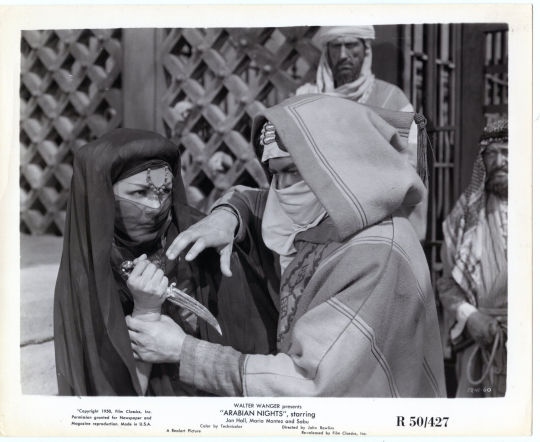

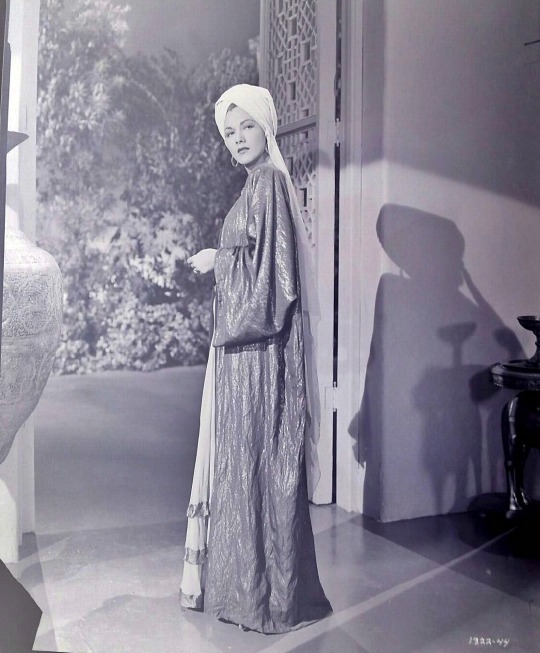









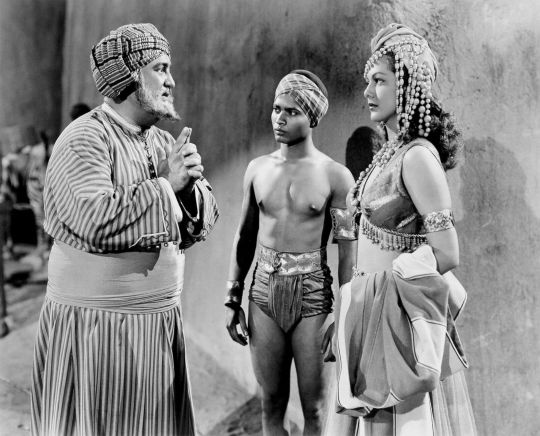


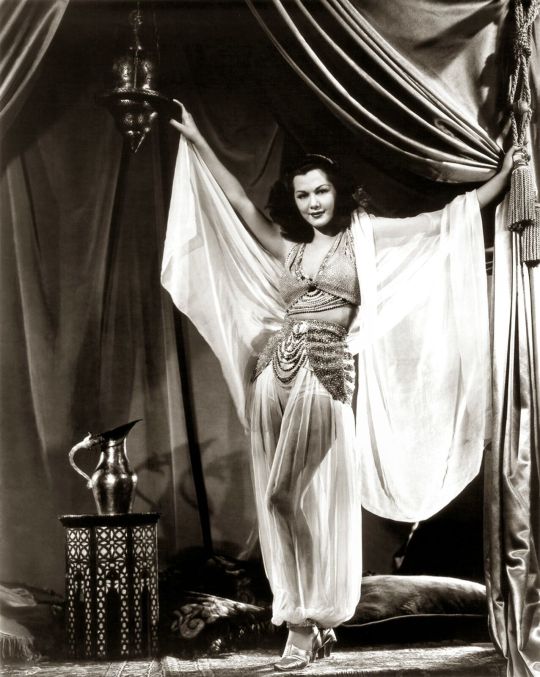
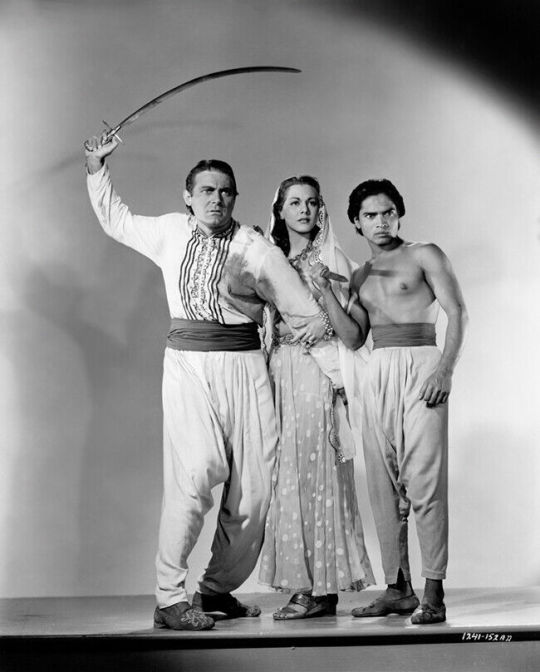
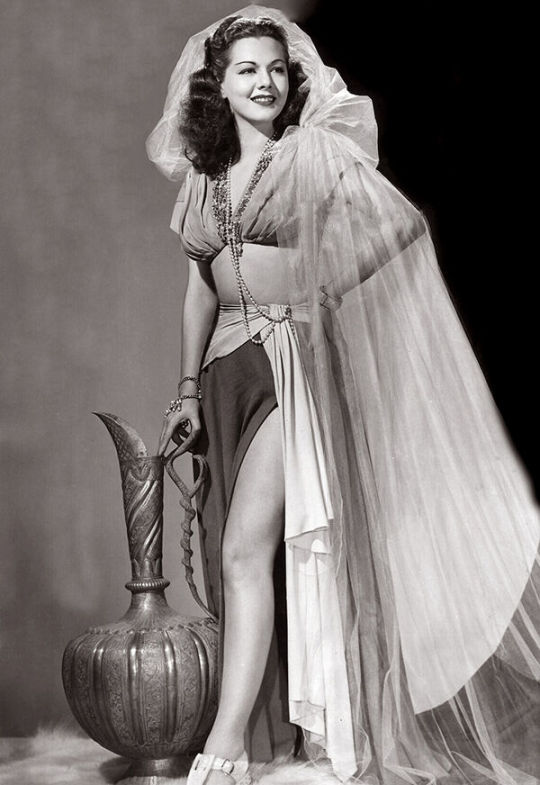






Arabian nights promotional photos (John Rawlins 1942)
Ebay & Scans from 1990s French magazine.
#Arabian Nights#1942 Arabian Nights#John Rawlins#Maria Montez#1942 Maria#Jon Hall#Sabu#Leif Erickson#Turhan Bey
8 notes
·
View notes
Text
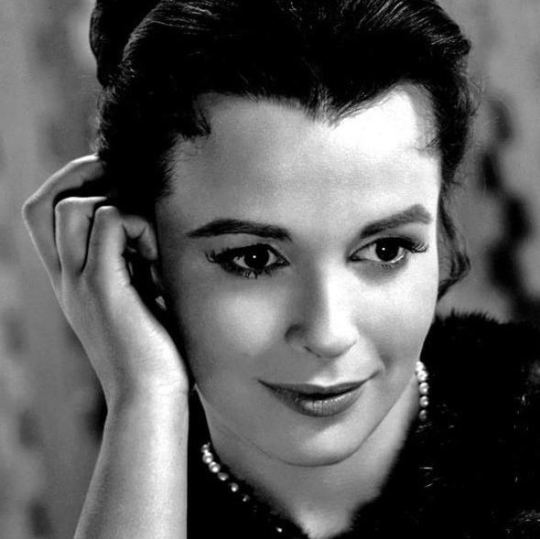
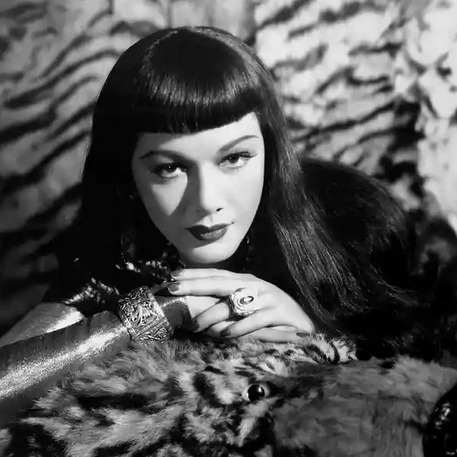
Propaganda
Claire Bloom (The Haunting of Hill House)— She played a hot sarcastic psychic lesbian in a haunted house! What more do you need?
Maria Montez (Cobra Woman, Arabian Nights)—maria montez was a dominican actress who rose to fame starring in a series of technicolor adventure movies in the 1940s hollywood, becoming popularly known as "the queen of technicolor”. her dramatic persona and elaborate bejeweled attire in these films subsequently lead to her becoming an early camp icon to underground queer filmmakers like jack smith and andy warhol. maria was fiercely determined to become a Movie Star from early on and tirelessly promoted herself (she would be killing it as an influencer today probably) - she deliberately cultivated an outré star persona in the tradition of old school screen vamps like theda bara and alla nazimova and she was always serving no matter where she was or what she was doing.
This is round 1 of the tournament. All other polls in this bracket can be found here. Please reblog with further support of your beloved hot sexy vintage woman.
[additional propaganda submitted under the cut]
Maria:
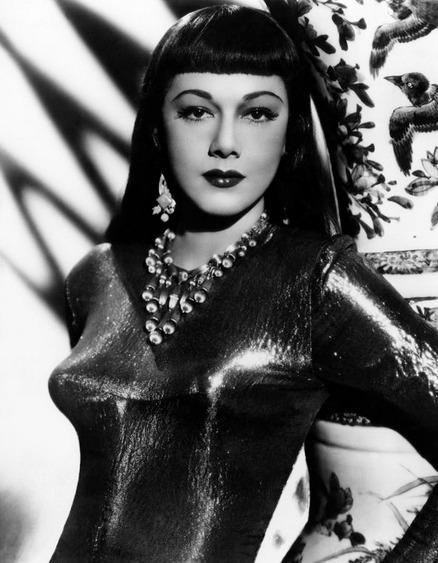
Dominican actress dubbed the Queen of Technicolor. Starred in colourful action adventure movies and was Universal Studios “glamour girl” of the 1940s. She starred in 26 movies before her untimely death in 1951. Shot to stardom with Arabian Nights in 1942. Fought with universal over roles she was cast in and managed to negotiate better pay for herself before going freelance and starring in European movies.
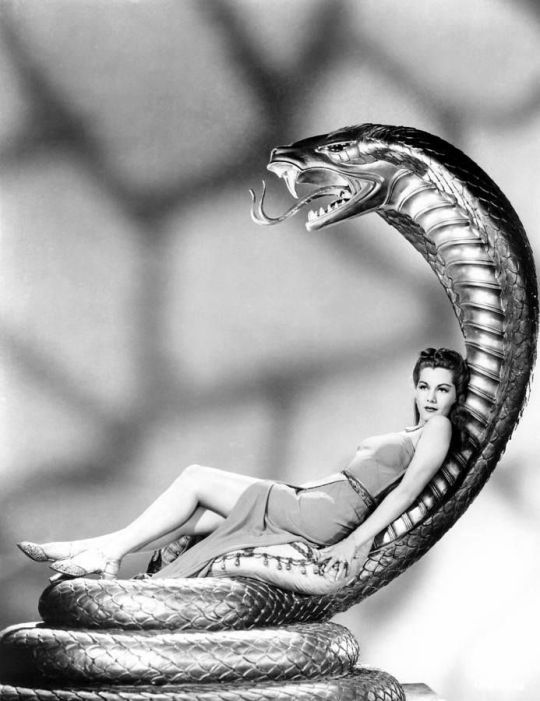
82 notes
·
View notes
Text

“Like [Mario] Lanza, Maria Montez had a reputation for being impossible to handle. After a number of years in Haji-Baba type adventures, she was dropped by Universal and forced to seek work in European cheapies. While in Europe, she attempted to counter her advanced state of avoirdupois with hot saline baths. She died in one of a heart attack at the age of thirty-one.”
/ From the book Flesh and Fantasy (1978) by Penny Stallings /
Died on this day in the Parisian suburb of Suresnes, France: golden age Hollywood’s nostril-flaring and tempestuous Queen of Technicolour Exotica, Caribbean Cyclone and leading lady of films like Arabian Nights (1942), White Savage (1943) and Cobra Woman (1944), Maria Montez (née María África Gracia Vidal, 6 June 1912 – 7 September 1951). Note: Stallings gets Montez’s age wrong in the quote above – she was 39 when she died. (Like any self-respecting diva, Montez had a “showbiz age”). Venerated by the likes of Gore Vidal and underground queer filmmakers Jack Smith, Andy Warhol and Kenneth Anger, Montez is a pivotal figure in the sensibility we now call “camp” and one of the original LGBTQIA icons. (Early Warhol drag superstar Mario Montez, for example, was christened after her). And aside from perhaps the young Yvonne De Carlo, did any woman wear a yashmak with more elan? “When I see myself on the screen, I look so beautiful I want to scream with joy” Montez once famously exclaimed. Maria Montez, you make ME scream with joy! Pictured: Montez in the 1949 film Siren of Atlantis playing – what else? – an evil queen.
#maria montez#exotica#siren of atlantis#lobotomy room#gay icon#old hollywood#classic hollywood#golden age hollywood#diva#kween#glamour#fierce#caribbean cyclone#queen of technicolor#kitsch#camp#retro#cobra woman
33 notes
·
View notes
Text

Dominican actress Maria Montez (1912 - 1951) as Sherazade on the set of the film Arabian Nights, 1942
114 notes
·
View notes
Text

Maria Montez as Scheherazade in Arabian Nights 1942 🕌
#old hollywood#beauty#romantic drama#1940s cinema#arabian nights#maria montez#jon hall#dominican actress#scheherazade
21 notes
·
View notes
Text

...images from the lost continent of cult films, b-movies and celluloid dreamscapes







The Many Voyages of Sinbad the Sailor:
Arabian Nights (1942) Sinbad the Sailor (1947) Son of Sinbad (1955) The 7th Voyage of Sinbad (1958) Captain Sindbad (1963) The Golden Voyage of Sinbad (1973) Sinbad and the Eye of the Tiger (1977)
#sinbad the sailor#fantasy#ray harryhausen#magic#arabian nights#from the badlands#from the b-movie badlands
2 notes
·
View notes
Text
The Weird History of Western Animated Movie Sequels
This is a rewrite of sorts of a history post I did on theatrical animated movie sequels in the West (largely the U.S.) a few years ago, and how weird it is... How we went from a handful of sequels over the course of three decades to an *explosion* in them... I'll collect all this fun stuff in a timeline of sorts.
(This list will mainly focus on traditional sequels, not so much films sharing similar themes and FANTASIA being planned as an ever-updating anthology w/ every re-release had it done well initially. And also, theatrical sequels. With the exception of movies re-routed to streaming because of COVID-19. That sorta thing, ya know?)

Late 1930s-Mid 1940s: Walt Disney and his studio entertain the idea of sequels to SNOW WHITE AND THE SEVEN DWARFS and BAMBI, titled SNOW WHITE RETURNS and BAMBI'S CHILDREN. Nothing comes of them. If FANTASIA is to be successful, Walt's plan for the film is to update it every couple of years, taking some segments out and replacing them with new ones. And repeating that once more. FANTASIA bombs at the box office upon general wide release in early 1942, so the plans fall through. A feature film BONGO is developed at the beginning of the decade, and at one point it is suggested to be set in the same universe as DUMBO and would feature characters from that film. BONGO eventually became a much pared-down segment of the package film FUN & FANCY FREE in 1947.
1942-1944: Disney and their distributor RKO Radio Pictures release two anthology "package" features, SALUDOS AMIGOS and THE THREE CABALLEROS. During World War II, Nazi influence began to take shape in Central and South America. American filmmakers, including Walt Disney and a select team of his artists, traveled south in part of a larger government strategy to strengthen goodwill between the U.S. and Central/South America. SALUDOS and CABALLEROS are thus "goodwill" pictures, formed up of multiple segments themed around those territories. Both of them feature Donald Duck and Jose Carioca. Because of this, CABALLEROS could be viewed as a "sequel" of sorts to SALUDOS.
April 1946: Disney and their distributor RKO premiere MAKE MINE MUSIC, an anthology of musical segments not dissimilar to FANTASIA. The picture goes into general release in August.
May 1948: Disney and RKO release MELODY TIME, another musical anthology film. The film notably features both Donald Duck and Jose Carioca in a segment called 'Blame It On the Samba', reprising their roles from SALUDOS AMIGOS and THE THREE CABALLEROS. The Aracuan Bird from CABALLEROS also appears during this segment. Like MAKE MINE MUSIC, these two films can be seen as an extension of the FANTASIA concept, and MELODY TIME could be seen as a sequel of sorts of MAKE MINE MUSIC. The Disney company never considered any of these films to be "sequels", at least in a more traditional sense.
We have a long gap here because Walt Disney Productions was the only animation studio in America that was making feature films, and there were plenty of times where they could've ceased doing just that. Couple that with Walt's general hesitance to make sequels, and thus there weren't any animated feature sequels made from the 1950s to the end of the 1960s... Other animation studios in America had attempted to make features, but never got past a small number of them. The Fleischer studio made both GULLIVER'S TRAVELS and MR. BUG GOES TO TOWN in 1939 and 1941 respectively, and their studio was shuttered shortly after BUG's quiet and brief general release rollout in early 1942. The UPA tried their hand at animated features, but only got around to making two, 1001 ARABIAN NIGHTS and GAY PURR-EE.
By the 1960s, more animation studios were making feature-length productions, such as Hanna-Barbera and Rankin/Bass. By 1970, there was at least one new movie from an American house every two-or-so years. A good chunk of them were also based on hit TV shows or well-known properties. Hanna-Barbera did features based on THE YOGI BEAR SHOW and THE FLINTSTONES, there was also a PEANUTS-based movie called A BOY NAMED CHARLIE BROWN. Ralph Bakshi shook up the animation world with his adult independent feature FRITZ THE CAT in early 1972.
A BOY NAMED CHARLIE BROWN and FRITZ THE CAT would be the first American animated movie sequels to get theatrical sequels...

August 1972: PEANUTS movie SNOOPY COME HOME!, a follow-up to A BOY NAMED CHARLIE BROWN involving much of the same key crew (such as director Bill Melendez and producer Lee Mendelson), is released by National General Pictures to poor box office.
June 1974: THE NINE LIVES OF FRITZ THE CAT, a sequel to Ralph Bakshi's FRITZ THE CAT that didn't involve Bakshi, is released by American International Pictures and doesn't repeat the success of the first movie.
August 1977: RACE FOR YOUR LIFE, CHARLIE BROWN is released by Paramount, and doesn't make much of a mark at the box office.
Late 1970s: Despite the success of Ralph Bakshi's rotoscoped THE LORD OF THE RINGS in the fall of 1978, a follow-up is considered but does not materialize due to funding issues.
May 1980: BON VOYAGE, CHARLIE BROWN (AND DON'T COME BACK!!) is released by Paramount to weak box office.
1984-86: After much turmoil, the Disney enterprise sees a major corporate shakeup. Outsider executives Michael Eisner and Frank Wells become CEO and President of the newly-christened The Walt Disney Company, respectively. Upending the old tradition of not making feature sequels, Michael Eisner and the new executives ask the staff of the animation studio what their highest grossing feature was to date. When revealed that it was THE RESCUERS, a sequel to the film is greenlit.
March 1986: A fast-tracked sequel to 1985's THE CARE BEARS MOVIE is released, and only makes a fraction of what the first film - a minor hit in its own right - took in.
August 1987: A third Care Bears movie, THE CARE BEARS ADVENTURES IN WONDERLAND, is released to equally unremarkable box office.
1988-89: Following the record-breaking, game-changing success of ex-Disney animator Don Bluth's Steven Spielberg-produced AN AMERICAN TAIL in 1986, a sequel is put in development, with Bluth initially tapped to helm. Bluth later broke ties with Spielberg over creative differences, and following the runaway success of WHO FRAMED ROGER RABBIT, Steven Spielberg would set up a new animation studio called Amblimation. They took over the film.
November 1990: THE RESCUERS DOWN UNDER is released to mixed critical reception and weak box office. Within weeks of release, Disney chairman Jeffrey Katzenberg has all the marketing for the film pulled.
May 1991: Computer animation studio Pixar enters a feature film deal with The Walt Disney Company. This three-picture deal, which would later be expanded, stipulates that NO sequels be pitched. Every film pitched by Pixar for this contract is to be an ORIGINAL film, for the sole purpose of introducing new worlds/characters for the company's theme parks and consumer products divisions.
November 1991: Universal releases AN AMERICAN TAIL: FIEVEL GOES WEST, the same weekend as Disney's BEAUTY AND THE BEAST. The film flops at the box office.
Mid 1991-Early 1992: Walt Disney Home Video initially refuses, at Roy E. Disney's behest, to release FANTASIA on video formats following its 1990 theatrical re-release. Michael Eisner makes a deal with Roy: Release FANTASIA on video, and a follow-up to FANTASIA will be greenlit. FANTASIA is released in November and pulled by January 1992, selling a record-breaking 14 million units. FANTASIA CONTINUED is greenlit.
Mid 1994: Following the success of THE RETURN OF JAFAR, which was essentially an hour-long direct-to-video pilot for the ALADDIN TV series, Disney Feature Animation does not pursue making theatrical sequels to their animated features. The only exception being FANTASIA CONTINUED, which is Roy E. Disney's pet project. All other sequels are to be outsourced productions, and are produced exclusively for the home video market.
March 1996: A sequel to Don Bluth's ALL DOGS GO TO HEAVEN, which didn't involve Bluth much like FIEVEL GOES WEST didn't, is released to poor box office.
Early-Mid 1996: Following the success of Pixar's debut feature, TOY STORY, Disney immediately commissions a direct-to-video sequel that is to be made by "B-team" of sorts at a satellite studio, while work on A BUG'S LIFE takes place at Pixar's main building in Point Richmond. (This was before they moved to Emeryville.)
July 1997: Legacy Releasing released a sequel to THE SWAN PRINCESS, titled THE SWAN PRINCESS: ESCAPE FROM CASTLE MOUNTAIN, to virtually nonexistent box office grosses.
February 1998: TOY STORY 2 is changed from direct-to-video project to theatrical feature film, though it will not count as part of Pixar's then extended film deal with The Walt Disney Company. That very contract mandated that all of Pixar's productions be original features, or else they wll NOT count as part of the deal. Pixar and the Disney company also enter a gentleman's agreement, in that Disney will not push sequels to Pixar films *without* Pixar's permission.
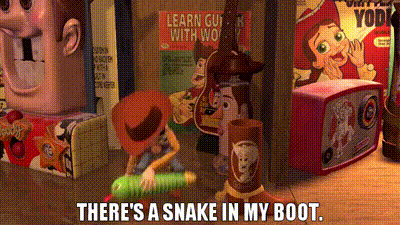
Early 1999: TOY STORY 2 is taken over by the staff at the main Pixar building due to concerns over the quality of the story. The film is significantly revised, with the release date mere months away.
November 1999: TOY STORY 2 is released, and becomes the first animated movie sequel to outgross its predecessor at the box office. Despite the film's success, and despite the considerable stress the production was, Michael Eisner refuses to count it as part of the deal. Pixar owner Steve Jobs strongly feels that TOY STORY 2 should count.
January 2000: On New Year's Day of the new millennium, Roy E. Disney's FANTASIA follow-up FANTASIA 2000 goes into IMAX-exclusive release after a world premiere the previous month.
February 2000: Disney makes the unorthodox decision to release THE TIGGER MOVIE in theaters, a production made by the satellite units that otherwise would've gone straight to video. The film is a financial success.
June 2000: FANTASIA 2000 goes into general release. The film does not recoup its costs at the box office, and is generally a dud with audiences.
Around Early-To-Mid 2000: Despite the contractual agita over TOY STORY 2, Pixar is keen to do a TOY STORY 3. However, it is not greenlit by Disney.
November 2000: Paramount releases a sequel to their Nickelodeon-based hit from 1998, THE RUGRATS MOVIE. While RUGRATS IN PARIS does not make as much money as the first movie, it is still a financial success.
Early-To-Mid 2001: DreamWorks, who are about to release SHREK, are already at work on a sequel. When SHREK defies its pre-release odds and becomes a box office smash upon its May release, the sequel goes full-steam ahead. Unlike Disney Animation, whose sequels are farmed-out straight-to-video endeavors, and unlike Pixar who can't make another sequel per their contract with Disney, DreamWorks has none of this baggage and goes right ahead with a SHREK sequel.
February 2002: Disney releases another satellite production, PETER PAN sequel RETURN TO NEVER LAND, theatrically. The film is a box office success.
June 2002: Following the success of the Blue Sky production ICE AGE, released by 20th Century Fox, work is already underway on a sequel. Much like DreamWorks, they too don't have the baggage Disney Animation and Pixar have concerning sequels.
February 2003: Disney releases satellite production THE JUNGLE BOOK 2 theatrically, another financial success.
March 2003: Disney releases satellite production PIGLET'S BIG MOVIE to theaters. Costing double that of RETURN TO NEVER LAND and JUNGLE BOOK 2, the film is a box office flop.
July 2003: RUGRATS GO WILD, the third RUGRATS movie and something of a sequel to THE WILD THORNBERRYS MOVIE, is released by Paramount to poor box office.
Early-To-Mid 2004: Friction develops between The Walt Disney Company and Pixar, making a split between the two seem likely. Per the contract, Disney has first rights to the studio's animated movies that made up the extended film deal. (Everything from TOY STORY to a then-forthcoming THE INCREDIBLES and CARS) If Pixar were to break off from the Disney company, Disney could feasibly make sequels to their films without them involved... And Michael Eisner took full advantage, going back on the gentleman's agreement between the two parties. Disney launches Circle 7 Animation, a CG studio meant to make these Pixar-less sequels. Work commences on TOY STORY 3, MONSTERS, INC. 2: LOST IN SCARADISE, and FINDING NEMO 2. It's largely a hardball tactic to get Pixar to renegotiate and extend their film deal.
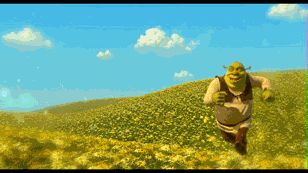
May 2004: DreamWorks releases SHREK 2 to record-breaking box office... This is where the game is truly changed... DreamWorks has three more SHREK movies lined up (the first of which aiming for a summer 2006 release), in addition to a direct-to-video prequel about the film's breakout character Puss In Boots.
February 2005: Disney releases one last satellite production to theaters, POOH'S HEFFALUMP MOVIE. Costing half of what PIGLET'S BIG MOVIE cost, it does alright at the box office.
Mid-To-Late 2005: DreamWorks sees another box office success in MADAGASCAR, and greenlights a sequel. This makes it the second ever DreamWorks movie to get a theatrical sequel. (Oddly, SHARK TALE from the year before, despite being a box office success and Oscar nominee, doesn't get a sequel.)
September 2005: After a campaign ran from the outside by Roy E. Disney, Michael Eisner resigns as the CEO of The Walt Disney Company. His successor, Bob Iger, seeks to renegotiate fairly with Pixar. Pixar's final film for the original contract, CARS, is less than a year away from release.
January 2006: In a historic move, The Walt Disney Company announces a $7.4 billion acquisition of Pixar.
March 2006: 20th Century Fox releases ICE AGE: THE MELTDOWN to great box office. Another film is on the way.
Early-To-Mid 2006: Following the announcement of Disney's purchase of Pixar, Pixar regains control of sequel production. Circle 7 Animation is shut down, and Pixar immediately begins work on *their* TOY STORY 3 for a 2009 release. Since a MONSTERS, INC. sequel and a FINDING NEMO sequel got to the script stage, Pixar eventually has to make their sequels to override those. A MONSTERS, INC. follow-up quietly begins development around this time as well. In addition to all of this, Pixar head John Lasseter takes over Disneytoon Studios and shuts down all traditionally-animated direct-to-video Disney sequels. This indicates that a future Walt Disney Feature Animation production, now named Walt Disney Animation Studios, will get a theatrical sequel if it's a box office success.
November 2006: HAPPY FEET, released by Warner Bros., is the biggest of the non-Disney/Pixar/DreamWorks/Blue Sky movies of the year and up until that point. Makes a big splash. Sequel likely.
May 2007: SHREK THE THIRD opens and is another blockbuster for DreamWorks.
January 2008: A rather unorthodox development, Big Idea makes a theatrical sequel to JONAH: A VEGGIETALES MOVIE, with THE PIRATES WHO DON'T DO ANYTHING. Universal distributes. It flops upon release.
April 2008: Two years into The Walt Disney Company's ownership of Pixar, a massive movie slate with Disney Animation, Pixar, and Disneytoon productions is unveiled. The game plan is the first announcement of a CARS sequel. This makes CARS the second-ever Pixar film to get a sequel. At the time, this movie is penciled in for a summer 2012 debut. TOY STORY 3 has also moved back a year, to 2010.
Mid-To-Late 2008: DreamWorks sees a new breakout hit with KUNG FU PANDA in the summer, and a sequel success with MADAGASCAR: ESCAPE 2 AFRICA.
July 2009: ICE AGE: DAWN OF THE DINOSAURS is released by 20th Century Fox, and scores excellently at the box office.
September 2009: Three features in, relative newcomer Sony Pictures Animation scores a good-sized hit with CLOUDY WITH A CHANCE OF MEATBALLS. A sequel is planned thereafter...
So now... We see where it all waxes... With that, we'll just look at things year by year...
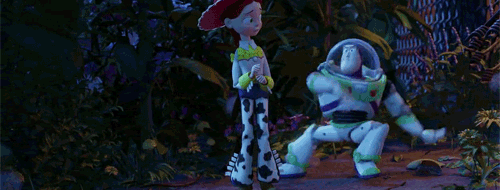
2010: TOY STORY 3 is released and becomes the highest grossing animated feature of all-time. Earlier in the year, Pixar confirms that they are in production of a MONSTERS, INC. follow-up. DreamWorks sees another breakout hit with HOW TO TRAIN YOUR DRAGON, a sequel is also imminent. Newcomer Illumination scores big with DESPICABLE ME, a sequel is also inevitable. DreamWorks scores another hit with SHREK FOREVER AFTER.
2011: It's a sequel/franchise film explosion, kinda unprecedented in feature animation up until this point... KUNG FU PANDA 2, CARS 2, and PUSS IN BOOTS all come out this year and make big money. Disney Animation makes a 2D animated WINNIE THE POOH, but it is sadly a box office bomb. HAPPY FEET TWO, from Warner Bros., also bombs. HOODWINKED TOO! HOOD VS. EVIL is belatedly released this year, it is also a money-loser. New films make a splash and are to get sequels.
2012: Two sequels this year, the highly successful MADAGASCAR 3: EUROPE'S MOST WANTED and ICE AGE: CONTINENTAL DRIFT. Disney Animation, after years of misses and mulligans (TANGLED didn't really make much of a profit theatrically, but was a very popular film), notably scores a profitable hit with WRECK-IT RALPH, a sequel slowly begins development.
2013: Plenty of follow-ups here, with MONSTERS UNIVERSITY, DESPICABLE ME 2, THE SMURFS 2, CLOUDY WITH A CHANCE OF MEATBALLS 2, and CARS spin-off PLANES (produced at Disneytoon and not Pixar). The majority of them do pretty good at the box office, some of them *very* good. DESPICABLE ME 2 is named by Universal as their most profitable film ever released, to date.
2014: This year saw the releases of RIO 2, HOW TO TRAIN YOUR DRAGON 2 and PLANES: FIRE & RESCUE. MADAGASCAR spin-off PENGUINS OF MADAGASCAR is deemed a disappointment by DreamWorks, leading to company-wide ramifications.
2015: DESPICABLE ME spin-off MINIONS debuts and is a rare animated feature to cross a billion worldwide, with only TOY STORY 3 and FROZEN having previously done that. Elsewhere, HOTEL TRANSYLVANIA 2 and THE SPONGEBOB MOVIE: SPONGE OUT OF WATER - a belated sequel to THE SPONGEBOB SQUAREPANTS MOVIE from 2004 - are released and also do well. Notably, Disney Animation announces FROZEN II this year. The first of the post-Eisner animated features to get a follow-up announced, though the WRECK-IT RALPH sequel - announced a year later - opened before it.
2016: KUNG FU PANDA 3, FINDING DORY, and ICE AGE: COLLISION COURSE are released this year. The fifth ICE AGE movie does fine, but not well enough to lead to a sixth film. A CG remake of Disney's 1967 THE JUNGLE BOOK - with a single real-life actor - is released this year to massive box office.
2017: THE LEGO BATMAN MOVIE, spin-off of 2014's THE LEGO MOVIE, debuts this year and does well. The other LEGO spin-off, THE LEGO NINJAGO MOVIE, doesn't. Elsewhere, CARS 3 does okay at the box office, DESPICABLE ME 3 breaks the billion, and Sony reboots the Smurfs movies with an all-animated film SMURFS: THE LOST VILLAGE. They deem the film a box office disappointment. THE NUT JOB 2: NUTTY BY NATURE, a sequel to the 2014 ToonBox-produced movie, debuts to muted numbers.
2018: Big year for sequels: Billion-dollar smash INCREDIBLES 2, big hits HOTEL TRANSYLVANIA 3 and RALPH BREAKS THE INTERNET, and... Belated flop sequel to 2011's GNOMEO & JULIET, SHERLOCK GNOMES.
2019: Two Disney smashes in TOY STORY 4, the 99.99% CGI LION KING remake, and FROZEN II, though Universal's THE SECRET LIFE OF PETS 2 doesn't make half of what the breakout 2016 original made. HOW TO TRAIN YOUR DRAGON: THE HIDDEN WORLD does fine, while THE ANGRY BIRDS MOVIE 2 and THE LEGO MOVIE 2: THE SECOND PART underperform.
2020: COVID-19 impacts the theatrical market, re-routing many films to streaming. TROLLS WORLD TOUR and THE CROODS: A NEW AGE debut this year, ditto a U.S. release of Aardman's first-ever movie sequel, FARMAGEDDON: A SHAUN THE SHEEP MOVIE. A third SPONGEBOB movie, SPONGE ON THE RUN, rolls out internationally before a quiet U.S. debut in the next year.
2021: The theatrical market slowly crawls back upon the unrolling of COVID-19 vaccines. Sequels this year include SPACE JAM: A NEW LEGACY, THE BOSS BABY: FAMILY BUSINESS, THE ADDAMS FAMILY 2, SING 2, and the unusual SPIRIT: UNTAMED: A follow-up to a TV series that was a follow-up to a flop DreamWorks movie.
2022: HOTEL TRANSYLVANIA: TRANSFORMANIA, TOY STORY spin-off LIGHTYEAR, MINIONS: THE RISE OF GRU, and PUSS IN BOOTS: THE LAST WISH make up this year, as we all know.
Last year: SPIDER-MAN: ACROSS THE SPIDER-VERSE, PAW PATROL: THE MIGHTY MOVIE, TROLLS BAND TOGETHER, and - notably - straight-to-streaming Aardman sequel CHICKEN RUN: DAWN OF THE NUGGET that still was theatrical-caliber.
This year: KUNG FU PANDA 4, INSIDE OUT 2, DESPICABLE ME 4, MOANA 2, MUFASA: THE LION KING, WALLACE & GROMIT: VENGEANCE MOST FOWL...
Next year: THE BAD GUYS 2, ZOOTOPIA 2, THE SPONGEBOB MOVIE: SEARCH FOR SQUAREPANTS, PLANKTON: THE MOVIE
2026: UNTITLED MARIO FILM, TOY STORY 5, SHREK 5, PAW PATROL 3, MUTANT MAYHEM 2, ICE AGE 6
2027: MINIONS 3, FROZEN III
Also on the horizon: SPIDER-MAN: BEYOND THE SPIDER-VERSE, INCREDIBLES 3, THE BOSS BABY 3, a third LEGO MOVIE, THE SEA BEAST 2, SECRET LIFE OF PETS 3, SING 3, a PEANUTS MOVIE sequel, and probably many more I'm forgetting at the moment...
Basically, the major cracks in the dam were TOY STORY 2, SHREK 2, and ICE AGE 2... Making sequels to animated movies was for a long time not ideal, getting an animated feature out period was at one point a gamble. (Still is, but not like it was many decades ago.) But yeah, a lot was at play for a while and then after it all blew up... Yeah, that's why there are so many of them.
7 notes
·
View notes
Text

Maria Montez in Arabian Nights, 1942

8 notes
·
View notes
Text

María Montez-John Hall-Sabu "Las mil y una noches" (Arabian nights) 1942, de John Rawlins.
7 notes
·
View notes
Text

René Bull (1845-1942) “Leaping Warrior” Arabian Nights book illustration, watercolor and pencil on paper
Source
7 notes
·
View notes
Text

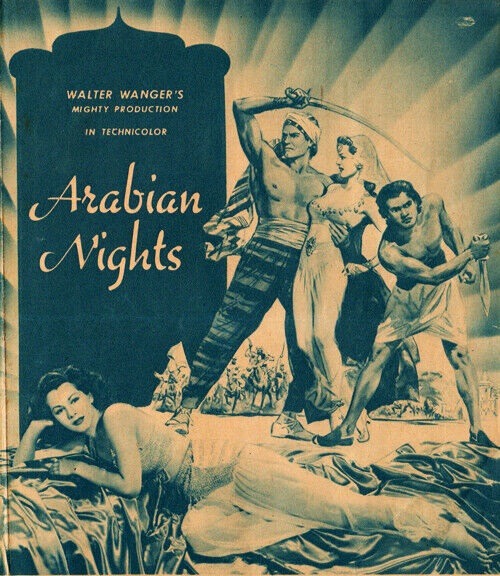
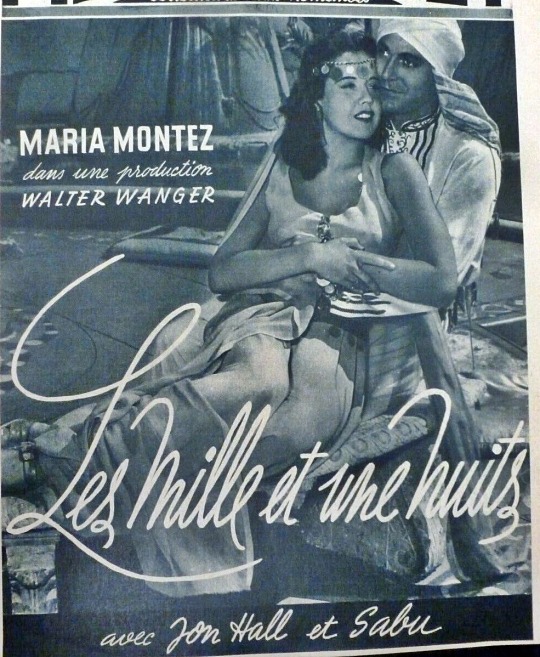


Arabian Nights
Arabian Nights is a 1942 adventure film directed by John Rawlins and starring Jon Hall, Maria Montez, Sabu and Leif Erikson. The film is derived from The Book of One Thousand and One Nights but owes more to the imagination of Universal Pictures than the original Arabian stories. Unlike other films in the genre (The Thief of Bagdad), it features no monsters or supernatural elements.
This is the first feature film that Universal made using the three-strip Technicolor film process, although producer Walter Wanger had worked on two earlier Technicolor films for other studios: The Trail of the Lonesome Pine (1936) at Paramount and the 1937 Walter Wanger's Vogues of 1938 for United Artists.
Plot (it may contain spoilers)
In ancient Persia, the young women of a royal harem read the story of Sherazade, unfolding the film's story. Sherazade, a dancer in a wandering circus, captures the attention of Kamar, the brother of the caliph, Haroun al-Rashid. Kamar's infatuation influences his attempts to seize the throne from Haroun and make Sherazade his queen. His revolt fails, and he is sentenced to slow death by exposure, but Kamar's men storm the palace and free their leader. Wounded and forced to flee, Haroun chances upon Sherazade's circus and is spotted by the young acrobat Ali Ben Ali. Aware of Haroun's identity, Ali hides him in the circus. Later, upon awakening from his injuries, Haroun beholds Sherazade and falls in love with her.
Meanwhile, Kamar assumes the throne, but Sherazade is not to be found. He orders the captain of his guard to find her, but a scheming grand vizier, Nadan, approaches the captain with the order to make Sherazade 'disappear.' After finding them, the captain sells the troupe into slavery. When the captain is found out, Nadan murders him in order to conceal his treachery. Haroun, Sherazade, and the acrobats escape the slave pens, but are found by Kamar's army and taken to a tent city in the desert. Kamar reunites with Sherazade and proposes, but she has fallen in love with Haroun instead. Nadan, recognizing the caliph, uses this knowledge to blackmail Sherazade into helping him remove Kamar from the throne, in return for safe conduct for Haroun out of the caliphate. In secret, however, he plans to have Haroun killed once he has crossed the border.
Upon learning of this insidious scheme, Ali and his fellow performers rescue Haroun, who then decides to free Sherazade with the help of the acrobats. But Haroun and the others are quickly captured, and Sherazade finally learns his true identity. Kamar engages Haroun in a swordfight, while the acrobats set fire to the tents; and the arrival of the caliph's loyal troops, summoned by Ali, triggers a massive battle. In the end, as Kamar prepares to deliver the deathstroke to Haroun, Nadan assassinates Kamar. But as he prepares to do in Haroun, Ahmad and Ali interfere, forcing him to flee. Nadan is stopped by a thrown spear and dies inside a burning tent, leaving Haroun, Sherazade, and their loyal friends to celebrate victory.
Cast
Jon Hall – Haroun-Al-Raschid
Maria Montez – Sherazade
Sabu – Ali Ben Ali
Leif Erikson – Kamar
Billy Gilbert – Ahmad
Edgar Barrier – Nadan
Richard Lane – Corporal
Turhan Bey – Captain of the Guard
John Qualen – Aladdin
Shemp Howard – Sinbad
William 'Wee Willie' Davis – Valda
Thomas Gomez – Hakim
Jeni Le Gon – Dresser / Dancer's Maid
Robert Greig – Eunuch
Charles Coleman – Eunuch
Emory Parnell – Harem Sentry
Harry Cording – Blacksmith
Robin Raymond – Slave Girl
Carmen D'Antonio – Harem Girl
The film was released on 25th December 1942.
Photos from ebay and text from wikipedia.
#Maria Montez#María Montez#1942#1942 Maria#Arabian Nights#1942 Arabian Nights#John Rawlings#John Hall#Sabu#Leif Erikson#Turham Bey#actress#La Reina del Tecnicolor#The Queen of technicolor#Montez Family#Gracia Family#Universal Pictures
16 notes
·
View notes
Text
Yesterday people in my lit class argued that Scheherazade from Arabian Nights (1942) is a groundbreaking feminist character because she is mean and uses her sexuality to get what she wants (to marry the caliph and be rich)

4 notes
·
View notes
Text
Dwell in spells
Strange to distill
All the horrors into a Hiku
A statement of fate
To free one’s self from fate
youtube
Perhaps a good intro is Late Night Alumni, Empty Streets, with Jay Aliyev, I Can High, “I always used to feel like, a lonely soul without a home, but now I’ve come to realize, I’m right where I belong. The city feels clean this time of night, just empty streets and me walking home to clear my head.” It has an Edward Hopper stillness to time, like Nighthawk 1942, is an eternal haunting from a previous life, for something I did. It reminds me of the nightclub I used to work at, techno and hip hop. Time has seemed to forgotten about me.
Music anthology- bare feet, 1960-70’s records in the 1980’s electronic age. Tapes, compact disks, radio stations, Deep Forest, pirate hip hop, Hendrix, bonfires, beer kegs, Eagles, and beach guitars. Night club bar work, London Techno, West Coast Rap, hard rock and heavy metal hang-out clicks.
A re-popped vintage home audio system, guitar amp conversion, has been on my mind a lot lately. Grateful Dead’s Wall of sound used MacIntosh MC-2300, Pioneer and Marantz sound very good as vintage receivers. Audio interface, and network music streamers can modernize vintage audio with Bluetooth and Wi-Fi receivers. Holy grail synthesizers include the Yamaha CS-80 that was used in blade Runner. More modest synthesizers would include The Roland JD-800 & Jupiter 8, and Korg 8 & M1, Yamaha CS-80 & DX-7, Waldorf Wave, and Minimoog.
High end Vintage table top wood case tube radio amp conversion with amp input jack and vintage microphone input jack for wind, wood and wire, and classical guitars would make a nice complement. The warm tones would suit a Cajon Drum Box and Handpan Drum. The high-end live grunge mid-range hang-out would include a nice Arabian rug, 80’s décor, bean bags, and perhaps even a lava lamp. Tape decks can record and provide backing music and a tactile interplay with live sound as a total vintage home audio aesthetic. Old equipment can be reconditioned with high-quality materials, including higher-quality insulated wires, and silver, as it is a better conductor and relatively cheap to source.
Japan came out with some Vintage Techno Hardware along the time dance music was kicking off in England and Germany. Echo units, drum machines, effect units, have a range of interactive uses and you could play electric guitar through a techno effects unit. This would all centre around a vintage analogue mixer, with complete system synthesis in functionality, style, and aesthetics.
youtube
Café Gossip
Working in the clubbing scene on a bar, looks like slave work, but I do miss the old version of me, it seems to have rotted with this idea of young love. All the relationships are broken like tea cups in a fine China shop. I may be romanticizing the potential. Sasha Alex Sloan version of Two Pilots, Dancing with Your Ghost reminds me of this lost world. An afterthought would be Zonoma & Sara Farell – Somebody Else, which is such a beautiful song. Perhaps it is in the wrong order, perhaps it is not. MollonoBass & Ava Asante - Feeling Good reminds me of the sunshine of nightwork, when the violin breaks through the clouds.
How did these beauties fall into my arms, Reflekt Feat. Delline Bass - Need to Feel Loved (Adam K & Soha Vocal Mix). Perhaps a little rain-soaked bodies under the street lamps, SOEL & Rinzen – Meliora. My love has always been greater than my reality, my mind, has always been quieter than the hope. Now it is dating by smartphone brands and credit card access. I think I am a ghost to all the love around me, or perhaps I am a god, lost in the wrong world.
It wasn’t the college experience I got, but now all the empty people of the past are stuck on Deadmau5 & Kaskade, I Remember, and apparently, it is called reflective glory. I really need to insert 4 Strings, Take Me Away here, an oldie but a goodie.
I should be more interested in things, Delerium feat. Sarah McLachlan – Silence. What does all this silence do in the end anyway? Internal narratives are a form of hell looking at itself, Sneaker Pimps - 6 Underground. When I look in the mirror, I don’t recognize the memories. There are three major fracture points in fate, high school and leaving, nightclubs and leaving, family and leaving. If I could sum it up its optimism of opportunity lost reminds me of, DJ Rui Da Silva, Touch Me.
youtube
I don’t mind losing me, I’m good, I don’t even know me. Some songs kind of remind me of being a kid, like Enya, Caribbean Blue, but its all just embellishments on stuff. I guess imagination and possibility has a high brain spark imprint, not the physical reality recall, just the feeling.
Where am I now in this reality and does it really matter, are we not all just characters in the movies and books of time, whether win or lose, we are still, just a story. Loves twisted roots, this hollow numbness, of a well-worn mask of family, writing dear life letters to the fractured truth, behind the stars singing to the clouds. Even deep inside, there is no shared shame, no teamwork, just a train wreck of lies, which becomes so firm in its roots, that to doubt it, is to hallucinate the raw reflection of time eating itself. Innocence is consumed by lies, optimism is diluted by acts, and habit is broken for momentary survival. A soft chime echoes out in the darkness; a dating app, I’m not in the mood to read it now.
Road Trip to a Small Town with a Muddy River
Life had reached some kind of climax years ago and now it resided in a manicured lawn of local emptiness. Imperial charms attract the most backwards-thinking locals, high on the notion that a building with pillars, is worth its architectural weight in gold coins, regardless if its foundations trembled from earthquake or cattle truck. It is difficult to criticize a personas mental prison over, the general pull of the town to congeal locals into a routine of, existence surrender. The dying age of several local food shops a couple decades past their due, sprung insects off the soft jelly sweets with their unnaturally hard, air-dried, outer shells. This signalled the gradual death of an old world, without a new world to embrace it.
Existence convenience was just technology from the city filling the same old tired buildings coated in white paint and rust. Life parades people like some kind of promotional tool of citizenship, in a nightly mini-series upgrade, on each new work shift, of melancholy time signature. The extroverted popular carbon copies wear well-cared-for masks, enjoying brief moments of love's fairytale, together.
youtube
Leverage intellect is a kind of revenge arch, manifesting a karmic environment of absolute control over their damaged ego. The internet created a middle ground, career-focused variant; popular culture typified as an ecosystem of fake on fake, built from a lack of participation. But in dreams, I dream of something love. I am illiterate of love, fake on fake, a tourist of my hometown, a beggar, and perhaps worst of all, a storyteller between compensation and denial, but still, I dream in curses. Love is a non-provider; a non-provider of party supplies, a non-provider of money, a non-provider of style and class, a non-provider of gifts made from all the big lies, or real love, told of other people.
Love is a toy, time is attention, hope is a deficit of promises in the hyperactive, for avoidant attention swims in symptoms of trend fantasies. Life’s still a show, and I am an unwilling actor who enjoys it from time to time, the acting that is, even when something is dying on the inside. The tragedy is a voyeur of the cultured fearful, which is almost trendy if it wasn’t replicated in every other cultural artefact. Reality is a bit of a meat grinder, but nothing makes the numbness of reality disassociate spirit from time, more; than when people chase a normal lifestyle and celebrate it as success. A muddy river runs through the old small hometown like a permanent curse, making it esthetically stagnant. Voids are character-building, but so is escapism; she is a tainted soul, with a post office in the middle, like a beacon of lost time. Pretty quickly you know it as intimately as the back of your hand and you outgrow that town quicker than others are consumed by it. It has a horror story quality to it, but for the most part, its just a museum of memories wishing for different endings.
youtube
Small Town in the Rear Vision Mirror
The world is a prison you cannot escape from, and life is a zoo that everyone can look in at. When your days are over, capitalism consumes you more efficiently as waste, than capitalism can provide a meal to the wasting bodies in waiting, wishing for the end of days. Time just gets worse and worse, spiralling out of control, and hate becomes what time sees in you, but in total delusion, love keeps telling you, fate gets better. Prettier co-workers get all the free party supplies, like trash on the side of the road, dying to some social voyeuristic curse. Admitting lost moments is a kind of naivety linked to intelligence, like the worst idea of romance, as a social trade-off to sacrificed passion, for lost normality.
Thought is just the speed of light voyeuristically living in hindsight, bizarre reality stabilizes memories as existence erodes into this pretty night, ugly day; like a soulless vampire that puts on makeup. You say to yourself, that is one of the most devious, cunning, and ruthless things, I could ever imagine; being the private joke among a group of superficial soft living types. Party kingpins to all their adventures without getting a ticket to go on anywhere wild and free, the synthetic metamorphism of adventure itself with a safety rating, old and broken.
Sun vibes and tree shade, quick winks and old buses, deluded fantasy, and road trips of make-believe, a peasant of moments, a motorbike for every thundercloud. Every animal spirit is its own island and the death of the soul is not death, but, a transition in the immortality of self-identity, as to discover a new world requires, a death in the old one. I ruled my own interpretation of life once, now the deeper dimension of the stars was the reflection of our own thoughts imagining itself to the cosmic sky never revealing good or evil, before opportunity becomes its willing sacrifice.
youtube

youtube


0 notes
Photo
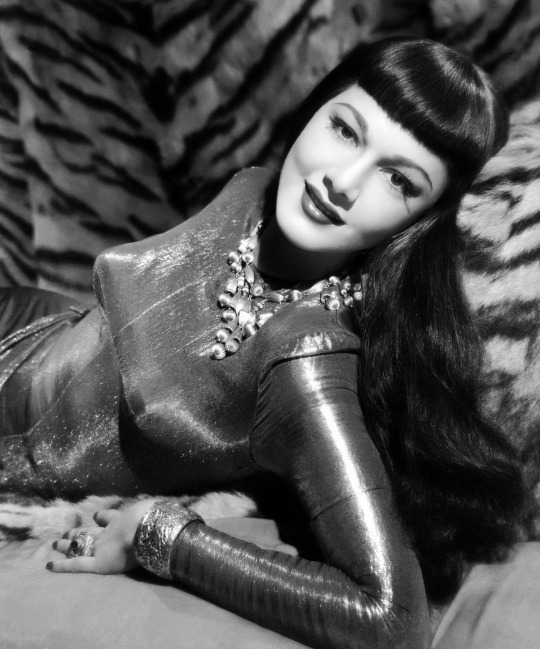
Born on this day 111 years ago: high empress of kitsch exotica, nostril-flaring Dominican actress, Caribbean Cyclone and Queen of Technicolour Maria Montez (née María África Gracia Vidal, 6 June 1912 - 7 September 1951). Venerated by the likes of Gore Vidal and underground queer filmmakers Jack Smith, Andy Warhol and Kenneth Anger, leading lady of films like Arabian Nights (1942), White Savage (1943) and Cobra Woman (1944) Montez is a pivotal figure in the sensibility we now call “camp.” (Early Warhol drag superstar Mario Montez was christened after her). Aside from perhaps the young Yvonne De Carlo, did any woman wear a yashmak with more elan? “When I see myself on the screen, I look so beautiful I want to scream with joy” Montez once famously declared. Maria Montez, you make ME scream with joy! Here she is in Siren of Atlantis (1949) playing – what else? – an evil queen.
#maria montez#siren of atlantis#kitsch#exotica#caribbean cyclone#queen of technicolor#old hollywood#golden age hollywood#diva#kween#fierce#gay icon#camp icon
65 notes
·
View notes
Text
A ARABIAN NIGHTS (1942) - trailer.
youtube
1 note
·
View note
Text
Sessão Mutual Films: As aventuras de Lotte Reiniger e Moustapha Alassane [Mutual Films Session: The Adventures of Lotte Reiniger and Moustapha Alassane]
November 20: The link above leads to Portuguese-language information about the 20th edition of the Mutual Films Session, co-curated and co-organized by me and Mariana Shellard, which will take place on November 22nd, 29th, and 30th at the São Paulo-based unit of the Instituto Moreira Salles.
The event proposes a dialogue between works from two pioneers of animation-based filmmaking. Lotte Reiniger (1899-1981), a German master of silhouette-based filmmaking, will be represented with two films - the 1921 short The Flying Coffer (her first of several fairy tale adaptations, this time based on a story by Hans Christian Andersen) and 1926's feature-length The Adventures of Prince Achmed (freely adapted from episodes of The Arabian Nights, or One Thousand and One Nights). The multifaceted Niger-born artist Moustapha Alassane (1942-2015) will appear with five films, including a playful docufictional work of live-action filmmaking (The Return of an Adventurer), a lyrical fable told with hand-drawn animation and stop motion (Samba le grand), and three wonderful animated films (La mort du Gandji, Bon voyage, Sim, and Kokoa) starring Alassane's favorite animal, the frog.
The screenings include a mixture of films by the directors, as The Flying Coffer will screen together with four of Alassane's films and La mort du Gandji will screen before The Adventures of Prince Achmed. This second program will feature an in-person introduction by the Brazilian animation filmmaker Fábio Yamaji on the night of the 22nd.
The screenings of Alassane's films are supported by the Cinemateca da Embaixada da França no Brasil and the Institut Français (through the Cinémathèque Afrique), an entity that aided the recent restoration processes involving Alassane's films Samba le grand and The Return of an Adventurer. La mort du Gandji was restored by the Office national du film du Canada/National Film Board of Canada, and the two films from Reiniger in the series were restored by the DFF - Deutsches Filminstitut & Filmmuseum in collaboration with Primrose Productions.
Special thanks for their help throughout the process of assembling this series are due to Alassane's son, Razak Moustapha, who has written a short introduction that will be read before the program "In the Kingdom of Frogs"; Amélie Garin-Davet, a France-born film programmer who coordinated a recent touring retrospective of Alassane's films in the United States and provided high-resolution images for usage in conjunction with the Brazilian screenings; and Dennis Doros and George Schmalz on behalf of the North American distributor of The Adventures of Prince Achmed, Milestone Films/Kino Lorber, for their invaluable work, including with Milestone's thoroughly researched presskit on the film.
Although Reiniger and Alassane likely never met, they shared similarly playful spirits, a taste for fables, and a desire to use art to reach and teach a broad audience (both locally and globally). This desire motivated Alassane in particular to advocate for greater and more inventive forms of distribution for African cinema, including through the organization of open-air screenings throughout Niger of his films in tandem with international classics that he loved. Like Reiniger, he believed that a filmmaker has the power to communicate with everyone, and often quite literally with the tools at hand.
0 notes